When we landed at both Eskimo Bay and, earlier in the trip, Paradise Bay, most of my shipmates headed off on a hike. A few of us stayed with Carol and did a casual surface-survey near a few of the houses.
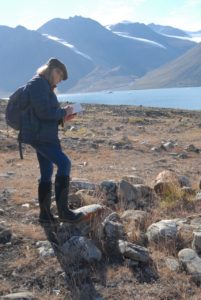
Carol takes notes on each find: its location, its condition, a description and photos. She can review notes from past visits to track what has changed at a site.
We hoped to find artifacts that Carol hadn’t seen before, and she was also looking for artifacts noted on previous visits, to see how they were weathering.
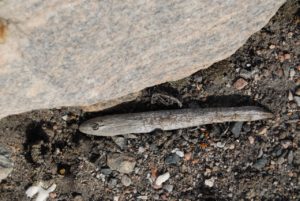
Wood is incredibly scarce in this tree-free zone above the Arctic circle. This sharpened stick would have been especially prized because of the knot near one end, which was believed to have supernatural meaning.
It turns out I have a good eye for that sort of thing. Although I don’t have the patience to make a career of it, I found it fascinating to walk slowly and carefully, bent over to scan the ground for anything that looked like it might have been fashioned by a human hand.
-
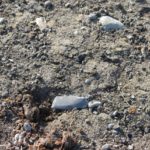
-
At Paradise Bay the unnaturally straight edges of this cutting tool made of slate caught my eye.
-
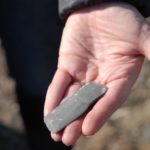
-
The short edge near the tips of Carol’s fingers seems to have been shaped into a sharp edge.
-
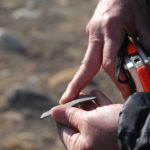
-
The three-inch long cutting tool may have been hafted to a handle of antler or bone to make it easier to use.
Since trash was disposed of by heaping it just outside the houses, there was a surprising amount of broken bone scattered on the surface of the earth.
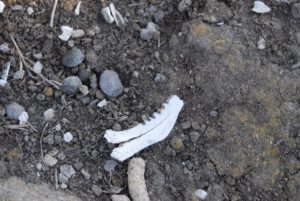
A line of holes on this piece turns out to be the tooth sockets in part of a jawbone of a small mammal. Note the other shards of bone around it.
The primary tool for shaping bone was a bow-driven drill — the people who lived here hundreds of years ago didn’t have saws or knives — so I concentrated on looking for small, perfect holes.
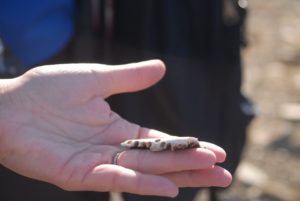
These perfectly round holes were also created by a person. This shard that Carol found seems to have been part of something larger, or perhaps it was a practice piece.
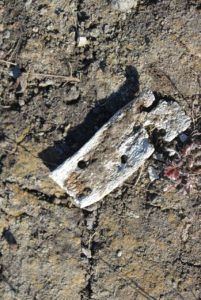
This other piece I found at Paradise Bay was probably part of a sled runner. Cord made of animal skin or sinew was laced through the holes so the piece could be lashed to the bottom of a sled.
Also at Paradise Bay, Robyn found a harpoon head. The notes and photos Carol takes of each find are eventually entered into a database that other archaeologists can access.
-
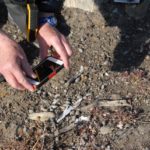
-
Carol takes a photo of a harpoon head found by Robyn, another of our guides, at the Paradise Bay site.
-
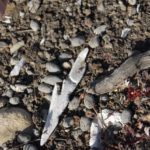
-
This harpoon head was probably used for hunting marine mammals.
At Eskimo Bay I made my favorite find: part of what Carol thinks was an amulet! The striking slot-like hole first caught my eye, and when I got down closer I saw that the thin piece of flat bone was decorated by a pattern of lines formed by holes that were not drilled all the way through.
-
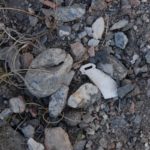
-
My most prized find was part of an amulet. I first noticed it in the dirt around the dwelling because of the oblong hole — probably an attachment point for a cord.
-
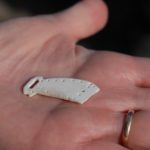
-
This fragment of amulet was something Carol hadn’t noticed on previous visits to the site. She was almost as excited about it as I was!
-
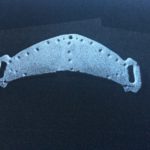
-
Carol’s digital reconstruction of what the artifact might have looked like.
That night back on the ship, Carol used her photo and computer to do a digital re-creation of what the larger piece might have looked like. She thinks this is the upper part, and that another section would have hung below it, but we have no way of knowing what it looked like, or what meaning it carried.
To have found this delicate work of art, held it in my hand, and imagined the lives of the people who created and used it hundreds of years ago was one of the highlights of my trip!

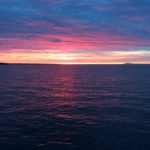
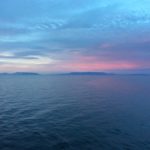
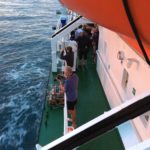
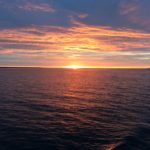
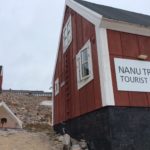
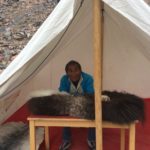
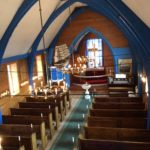
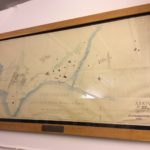
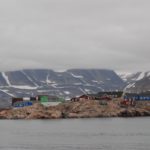
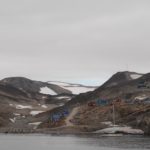
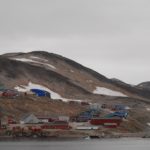
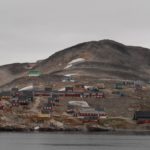
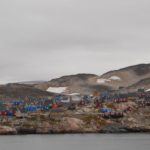
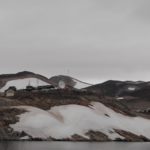
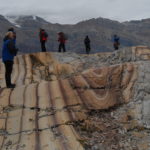
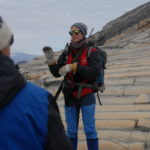
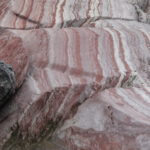
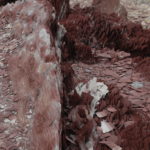
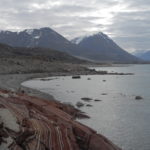
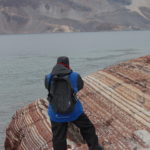
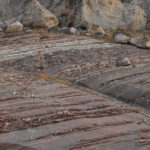
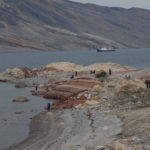
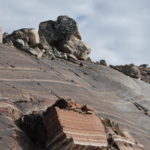
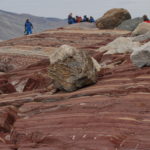
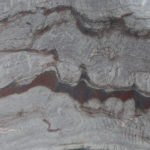
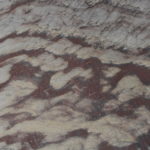
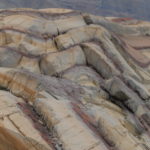
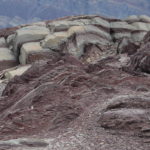
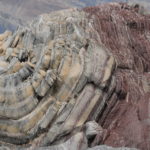
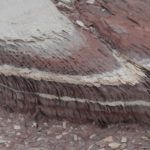
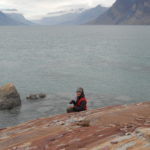
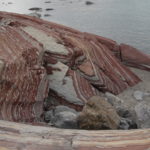
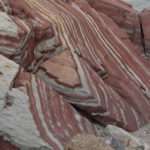
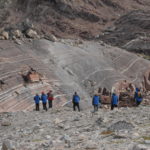
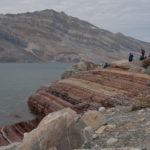
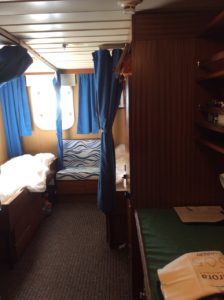
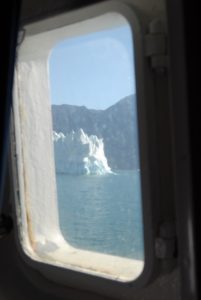
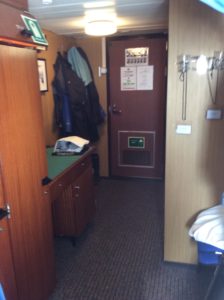
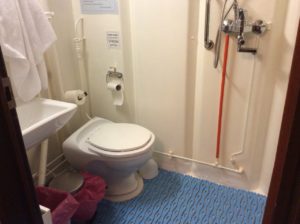
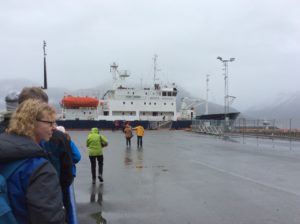
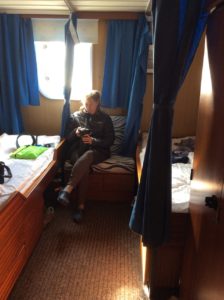
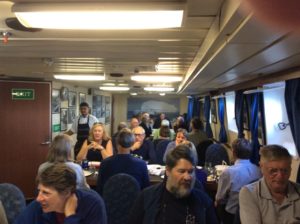
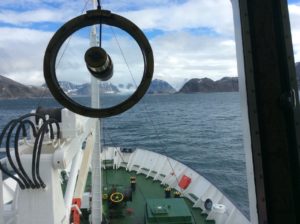
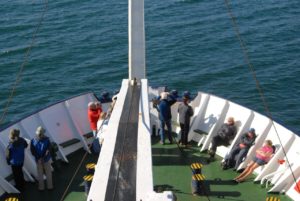
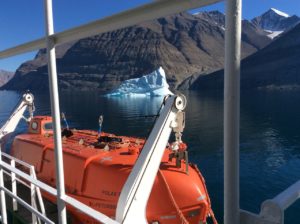
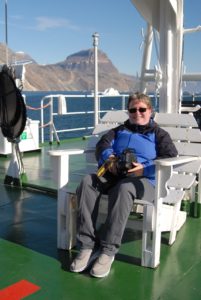
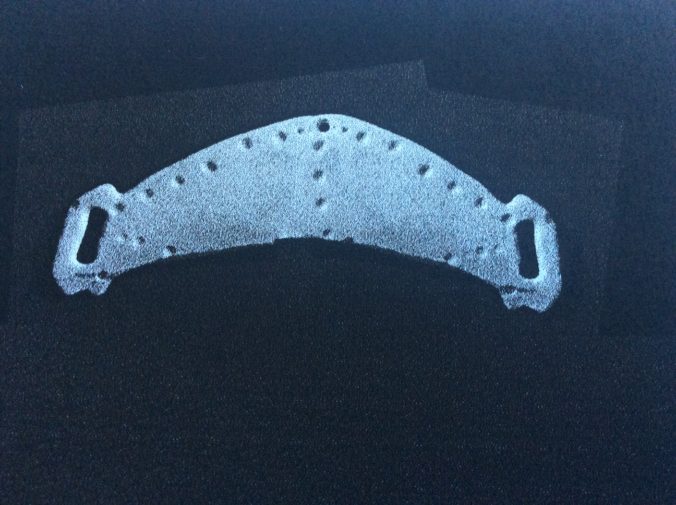













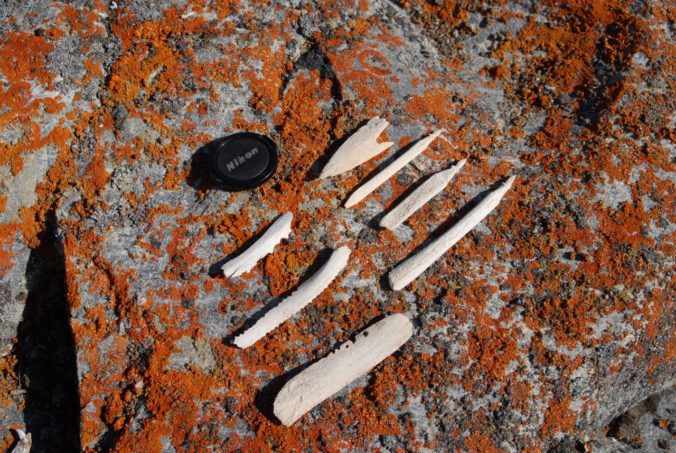
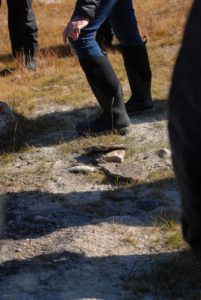
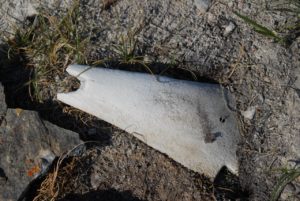
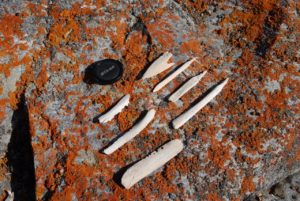
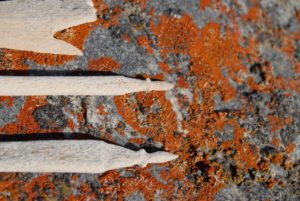
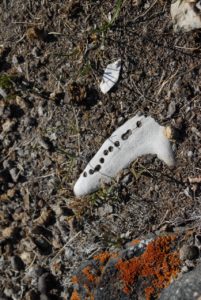
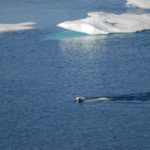
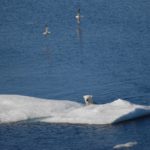
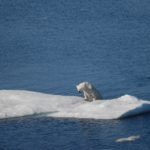

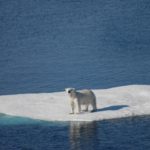
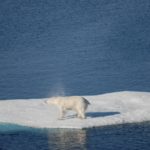
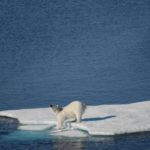
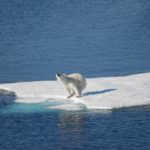
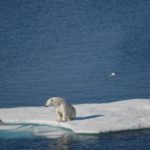
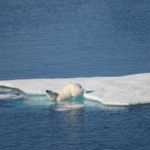
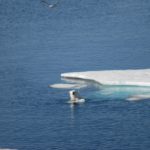
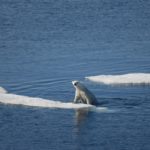
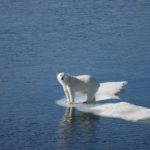
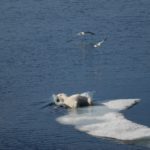
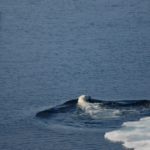
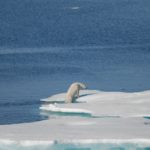
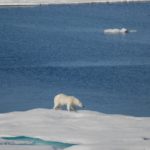
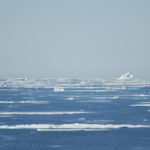
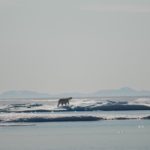
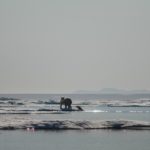
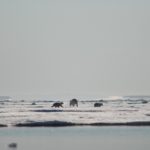
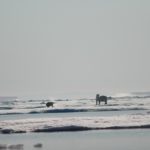
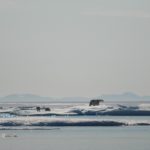
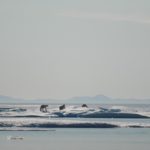
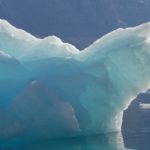
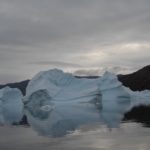
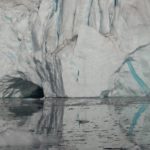
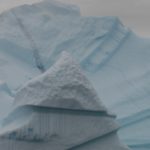
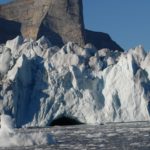
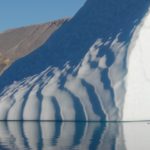
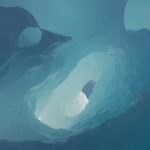
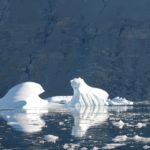
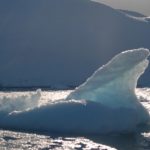
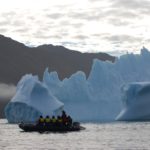
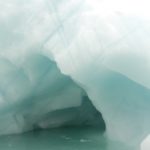
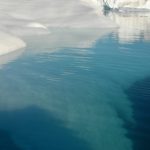
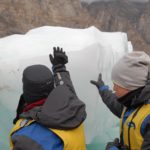
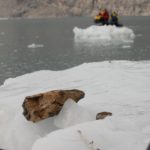
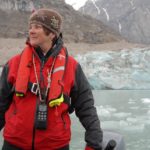
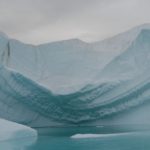

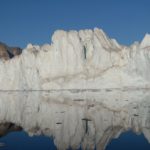
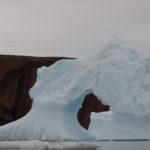
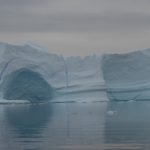
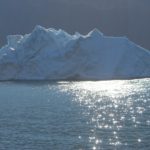
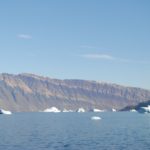
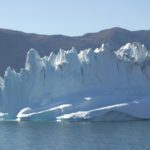
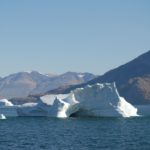
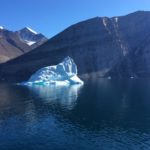
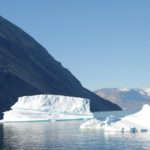
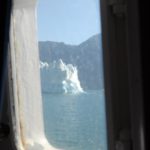
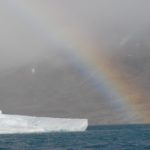
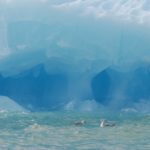
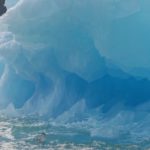
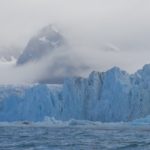
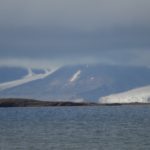
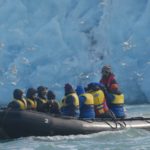
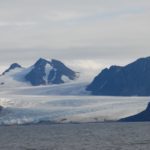
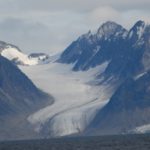
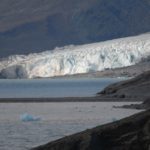
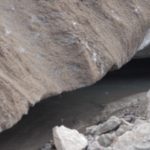
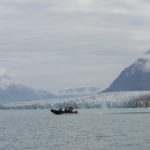
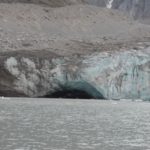
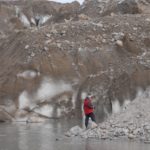
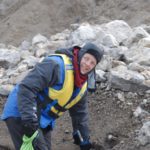
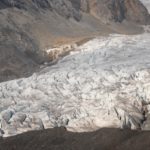
Recent Comments